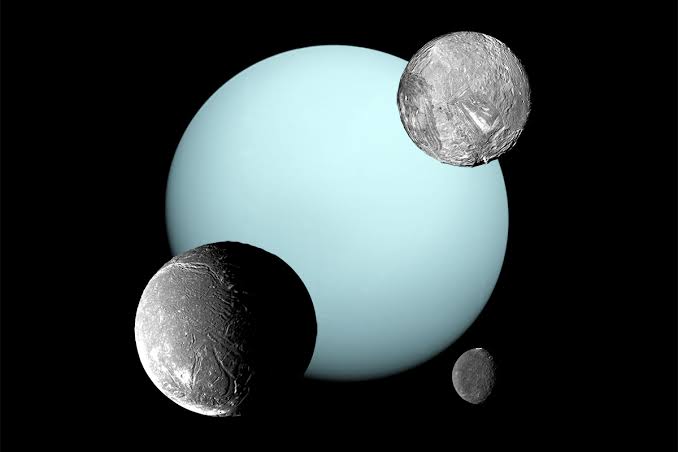Could Uranus’ moons harbor life? New research suggests that unexplored regions of our solar system may host liquid oceans and favorable conditions for life. While Jupiter’s and Saturn’s moons have dominated discussions on extraterrestrial oceans, Uranus’ moons are now sparking interest among scientists eager to explore their potential habitability.
Unexplored Moons Hold Promise
Until now, moons like Europa (Jupiter) and Enceladus (Saturn) were prime candidates for subsurface oceans, despite lying outside the “Goldilocks zone”—the ideal distance from a star for liquid water to exist on a planet’s surface. However, experts theorize that life could emerge within these oceanic environments, heated by geological activity or other mechanisms.
Now, Uranus’ moons have entered the conversation. According to planetary scientists, there are compelling signs that these moons could host internal liquid oceans with chemical conditions that may support life.
Calls for a Uranus Mission
In a recent paper, planetary scientists propose sending spacecraft to investigate Uranus’ moons and explore the possibility of habitability. “The most exciting prospect at the (Uranian) moons is that they could still host subsurface oceans at present,” said Julie Castillo-Rogez, a planetary scientist at NASA’s Jet Propulsion Laboratory. This mission could shed light on the mechanisms that maintain these moons’ warmth, especially if multiple moons are found to harbor oceans.
Voyager 2’s Data: Unlocking the Secrets of Uranus’ Moons
NASA’s Voyager 2 spacecraft provided key data on the Uranus system during its 1986 flyby. Reanalyzed in 2022 by a team led by Castillo-Rogez, this data focused on five large Uranian moons—Ariel, Umbriel, Titania, Oberon, and Miranda. The team’s findings suggest that Ariel, Umbriel, Titania, and Oberon may have internal liquid oceans between their cores and icy crusts.
Unlike moons closer to the sun, the Uranian system’s extreme distance makes radioactive decay—from elements like potassium, uranium, and thorium—a primary source of heat, according to Castillo-Rogez.
Geological Activity and Signs of Life
Intriguingly, Miranda and Ariel show signs of past geological activity such as tectonics and ice volcanoes, with evidence suggesting this occurred between 100 million and 1 billion years ago. These findings suggest that Uranus’ moons could offer the right conditions to investigate internal thermal activity, which is critical to the potential for life.
Scientists also aim to study the salinity of these oceans. Extremely salty water could inhibit life forms, while life in these environments would need a steady supply of chemical energy. Any organisms that exist would likely reside in these deep, subsurface oceans, avoiding radiation and staying close to their life-sustaining water sources.
Why Uranus Could Be the Next Big Space Mission
A mission to Uranus and its moons would offer incredible opportunities to understand how life might evolve in extreme environments. By analyzing their thermal conditions and the potential for liquid water, scientists hope to uncover whether these distant moons could be hospitable to life.
With growing interest from the scientific community, Uranus’ moons could soon become the focus of the next big mission to explore habitability beyond Earth.



